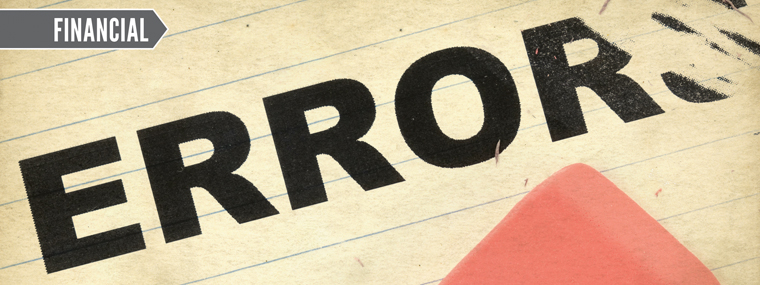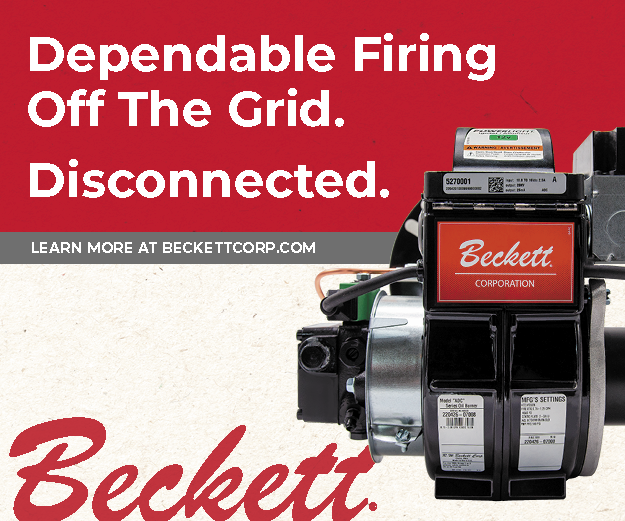
Financial: Correcting Business “Boo-Boos”
By Mark E. Battersby / Published May 2016

Every pressure cleaning business faces an ever-increasing amount of red tape, rules, regulations, fees, and taxes that they must contend with. At the same time, enforcement on every level is becoming more aggressive and more issue-focused, with even more costly results.
It doesn’t take an experienced contractor or business owner to know that mistakes are inevitable. Fortunately, a combination of unique tax write-offs and strategies can help any pressure cleaning business avoid potential pitfalls and make many of the changes necessary to grow the operation’s profitability.
Taxing Taxes
Although it should come as no surprise that few taxpayers amend their returns to report additional income, correcting or amending a tax return because of errors, omissions, mistakes, overlooked deductions, or changes in our tax laws is actually encouraged by the IRS—and may mean substantial tax savings.
Generally, a pressure cleaning business—or its owner—can change their mind about previously reported income and deductions within three years from the time the return was filed, or within two years from the time the tax was fully paid, whichever is later. If the refund claim involves the deductibility of bad debts or worthless securities, the period is seven years.
Individuals, sole proprietors, etc., use Form 1040X, Amended Individual Tax Return. A corporation that filed Form 1120 uses Form 1120X, Amended U.S. Corporation Income Tax Return, to file an amended return, while S corporations and partnerships check a box on the Form 1120S or Form 1065.
A Changing Of The Mind
Uncle Sam, in the form of the Internal Revenue Service, demands every pressure cleaning business that is required to pay taxes guess their income for the coming year—and pay an estimated tax bill by making installment payments over the course of the year. Unfortunately, after the tax bill for the year has been estimated and payments computed, changes in income, adjustments, deductions, credits, or exemptions may make it necessary to refigure the estimated tax installment.
Should an incorporated pressure cleaning business figure and deposit its estimated tax only to find that its tax liability for the year will be more or less than originally estimated, refiguring remaining estimated payments will be necessary, especially if an overpayment might result. Of course, an immediate catch-up payment should be made to reduce any penalty that might result from underpaying either earlier or remaining installments.
Accounting Methods
There is no right accounting method for all businesses. Both cash accounting and accrual accounting have their pros and cons. The basic difference between cash and accrual methods of accounting lies in the timing of revenues and expenses.
The cash basis method of accounting recognizes revenues when money comes into the pressure cleaning business and recognizes expenses when money is paid out. Cash basis doesn’t recognize accounts receivable or payable. Only when a bill is paid does an operation using the cash method of accounting recognize an expense.
Unfortunately, once an accounting method has been selected, the approval of the IRS is required before changing that method—even where the change is demanded by the IRS. Also remember, a pressure cleaning operation’s accounting method includes not only the overall method of accounting used, but also the accounting treatment used for all transactions, income, and expenses.
The IRS’s Form 3115, Application for Change in Accounting Method, is used to request a change in either an overall accounting method or the accounting treatment of any item. There are some instances when an incorporated business can obtain automatic consent from the IRS to change to certain accounting methods.
In other instances, you can file Form 3115 using the advance consent request procedures. If the requested change is approved, the pressure cleaning business will receive a letter ruling on the requested change, at which time a fee may be required.
Changing Business Entities
Changing circumstances, changes in the tax laws, and even the success of the business might prompt a reassessment of the form your pressure cleaning business operates under. It makes sense to ensure you are using the best entity to provide your business—and yourself—with the most benefits and consistently lowest tax bill.
Although many of the tax law’s provisions apply to all business entities, some areas of the law specifically target each entity. Choosing among the various entities can result in significant differences in federal income tax treatment, but there is also more to choosing the right structure for a pressure cleaning business than taxes.
Not only will the decision to change the business’ entity have an impact on how much is paid in taxes; it will also affect the amount of paperwork required for the business, the personal liability faced by the principals and, especially important in today’s economy, the operation’s ability to raise money.
Lease/Buy
The lease accounting rules, as we currently know them, are changing. Negotiations between the International Accounting Standards Board (IASB), which sets rules for many countries around the globe, and the U.S. Financial Accounting Standards Board (FASB), which writes the rules in the U.S., have produced mutually acceptable accounting standards. The new guidelines will require many businesses to add all but the shortest leases to their balance sheets as liabilities, much like debt.
Although the newly announced guidelines will not officially kick-in for a couple of years, imagine the impact on the pressure cleaning business when a supplier, lender, or even a potential buyer expects to see leases reflected on the operation’s financial statements. The many businesses that currently have borrowing limits and/or restrictions placed on them by lenders and investors could, once leases must be included on the operation’s balance sheet, be in violation of those agreements.
Fortunately, there will be a considerable delay before the new rules become effective. This will give pressure cleaning contractors and businesses time to comply and, in some cases, to renegotiate loan agreements.
Re-Negotiating Leases
Rent is often a business’s largest recurring expense. However, unlike many other fixed costs, a commercial lease is negotiable—even if the operation is already locked into a contract. In fact, there are three situations where it might make sense to approach your landlord: (1) the business is struggling; (2) the local real estate market is experiencing a downturn, or (3) the lease will expire within a year or two.
Rarely will a lender or landlord agree to reducing a financially strong tenant’s rent unless, of course, the restructured agreement will provide the landlord with an economic advantage. There are strategies when such economic benefits are possible, which can turn out to be a win-win for the tenant as well as the landlord.
Create Competition: Even if you don’t want to move, shop around and collect written offers from other landlords that can be used as leverage when renegotiating with your current landlord.
Never Make the First Offer: Making the first offer in renewal negotiations should be resisted. By doing this prior to your renewal, it implies that you will stay, thereby undermining your negotiating strength.
Asking for the Moon: When negotiating for free rent, tenant allowance, or any other term, always ask (negotiate) for more than what is needed. By asking for more than what you expect to receive, you are positioning yourself for any give and take based on the importance of certain negotiating points.
Negotiate Non-Rent Issues: These include parking, signage, carpet, paint, and any deposit or personal guarantee which might have been agreed to previously. Is more space needed for customers and/or staff? Want additional parking closer to the property’s doors? Would more or better signage outside of the property be beneficial? As a current tenant, the landlord will want you to remain, and the landlord’s expenditures for these non-rent items is usually far less than the cost of attracting a new tenant.
Finding A New Pro
Making many of these and other changes may require the services of a professional, perhaps even one more experienced than the pressure cleaning business’s current advisers. As the business grows, the need for professional advice, assistance, and guidance may become more acute, requiring the services of better skilled professionals.
Fortunately, there are a variety of skilled professionals just waiting to serve you and your pressure cleaning business. The first step to finding the right professional requires an inventory of what you—and your business—actually need in the way of services and advice and, most importantly, how much you can afford to pay.
Shopping for any professional is virtually a necessity in today’s business economy, and many professionals offer free first meetings for discussion of expectations, services needed and provided, extent of involvement by the professional and the portion of the work expected to be shouldered by the business, time constraints and, above all, costs.
It is not “tacky” to discuss fees before engaging the services of a professional, although money should not be the sole criteria for selecting that professional. Obviously, finding a professional at an affordable price is a process that should begin immediately.





